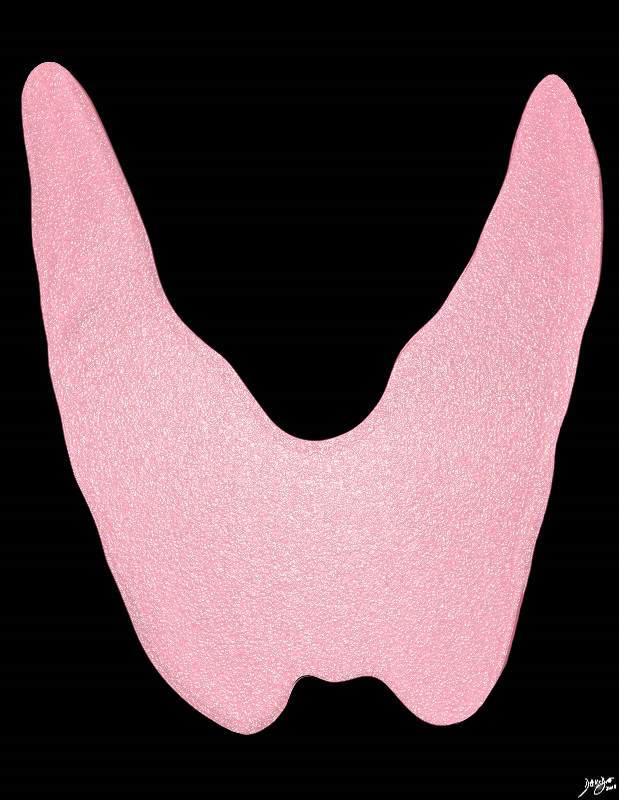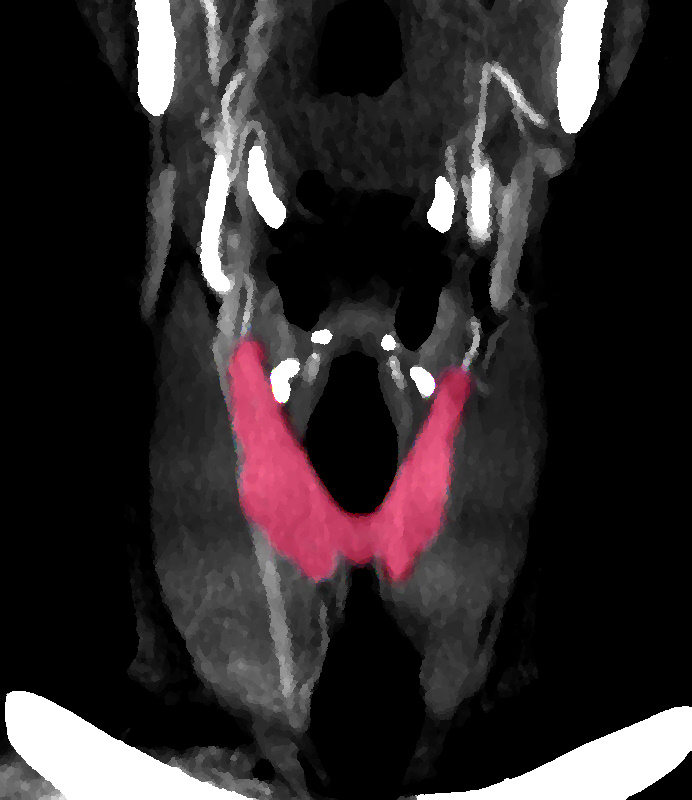The Common Vein Copyright 2010
Definition
The thyroid is one of the largest endocrine glands. It is located immediately inferior to the larynx and thyroid cartilage, or the ‘Adam’s apple’, and anterior to and on each side of the trachea. It is an essential part of the endocrine system.
The structure of the thyroid is characterized by its highly vascular nature, bilobed, butterfly-shape, location in the neck, and its upward movement on swallowing due its attachments to the laryngoskeleton. It is comprised of a large number of follicles, each filled with its secretion called colloid. The follicles are lined with thyroid hormone secreting follicular epithelial cells, and surrounded by calcitonin secreting parafollicular cells (C cells), and a dense network of capillaries. . It is the only endocrine organ in which the products produced are stored in an extracellular location.
As an endocrine organ, the function of the thyroid is to synthesize and secrete hormones into the blood stream. It secretes thyroxine (T4), triiodothyronine (T3) and calcitonin. The thyroxine and triiodothyronine are involved in the basal metabolic rate (oxygen consumption at rest) and are produced by the follicular cells. The calcitonin is produced by the parafollicular cells or C cells. Calcitonin reduces serum calcium, opposing the effects of parathyroid hormone. Thus, through release of these hormones the thyroid plays an important role in regulating both metabolic rate and calcium metabolism.
One way of looking at the meaning of basal metabolic rate and the dominant function of the thyroid is to relate its function to the well known song – “Keep the Home Fires Burning”. By acting on the cells of the body they keep the overall metabolism of the body in a steady state optimizing metabolism throughout the body.
Common diseases of the thyroid include hyper- and hypothyroidism, thyroiditis, and cancer of the thyroid.
Thorough assessment of a patient’s family history, geographical history, and physical symptoms are key first clinical steps in diagnosing thyroid disease, since some of the disorders are hereditary, some related to iodine content in the soil where people live and grow their own crops, and some to radiation exposure. Laboratory tests for serum levels of thyroid-stimulating hormone (TSH) and nuclear scintigraphy, a tissue-specific imaging technology, are also useful in confirming cases of under or over active thyroid. Diagnosis of thyroid cancer requires additional measures, including ultrasound imaging and needle biopsy.
Treatment for hyperthyroidism includes medication, radioisotope therapy, and surgery. While hypothyroidism is easily treated with a lifelong regimen of hormone replacement therapy, Grave’s disease, an autoimmune hyperthyroid state is treated with antithyroid medication, radioactive iodine and surgery, and thyroid cancer almost always involves surgery.
|
The Thyroid Gland |
|
The artistic rendition of the thyroid reveals an almost butterfly shaped structure. The lobes form the bulk of the tissue and the isthmus that lies between the two lobes may be broad and high but is usually relatively narrow in the anteroposterior dimension measuring only about 3-5mm . Courtesy Ashley Davidoff MD copyright 2010 all rights reserved 93852..4kd02b.8s |
|
The Thyroid Gland in Situ |
|
The coronally reformatted CT scan of the neck has been artistically rendered and demonstrates a normal thyroid in a 26 year old female. The lobes of the thyroid are not necessarily symmetrical as demonstrated in this example and if asymmetric, the right lobe is usually the larger. Courtesy Ashley Davidoff MD Copyright 2011 93852..8kb05 |


